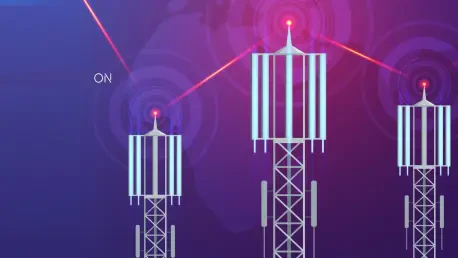In recent developments within Australia’s telecommunications industry, Telstra has come under intense scrutiny over allegations of misleading marketing practices related to its mobile network coverage. TPG Telecom has accused Telstra of exaggerating its network reach by almost 1 million square kilometers, claiming that these figures were derived from surveys using powerful booster antennas rather than typical mobile handsets. These allegations have raised significant concerns about consumer misinformation, as Telstra’s inflated coverage claims have reportedly shaped public perception of its network superiority for over 15 years. As a result, the Australian Competition and Consumer Commission (ACCC) has initiated an investigation into these practices. However, it faces challenges regarding the transparency of information provided by network operators.
The Allegations Against Telstra
Discrepancies in Coverage Reporting
Telstra’s coverage claims have been called into question due to allegations of overstating its network area using data from surveys enhanced by booster technology. This discrepancy between the reported network size and the actual area accessible to regular mobile handsets has triggered accusations of deception from competitors like TPG Telecom. According to TPG, such information creates a misleading narrative for consumers who rely on Telstra’s promotional materials and annual reports to make informed decisions regarding their mobile network choices. The method of using booster-enhanced surveys has reportedly been a practice for over a decade, influencing how the provider markets its network superiority in a competitive field. Yet, in facing these accusations, Telstra has admitted it underestimated the differences in coverage when using regular handsets compared to booster-enhanced data. It highlights the discrepancies in network reporting metrics that can mislead consumers and skew market perceptions.
Impact of Regulatory Scrutiny
The ACCC’s investigation reflects a broader trend within regulatory bodies to scrutinize and ensure the accuracy of information disseminated by telecom operators. The commission’s frustration over a lack of transparency and comparable data has been evident, as network operators have not standardized their coverage metrics, leading to consumer confusion. By highlighting Telstra’s partial admission of overblown network claims, the focus shifts toward a necessity for clearer, standardized reporting. The regulatory body’s efforts emphasize the importance of protecting and informing consumers by mandating accurate marketing practices in the industry. Moreover, this scrutiny underscores the challenges regulatory authorities face in holding telecom operators accountable, especially when market performance heavily depends on consumers’ perceptions influenced by reported network reach. The outcomes of these efforts may lead to significant changes in how operators communicate their coverage, fostering a more transparent environment moving forward.
Responses from the Telecom Sector
Telstra’s Position and TPG’s Advocacy
Despite acknowledging discrepancies in its coverage metrics, Telstra maintains it operates the country’s largest network, citing a claim that its network remains significantly larger than that of TPG. This persistence in asserting its market leadership suggests an ongoing tension in the telecom industry, where companies vie for superiority through strategic marketing efforts. However, the undercurrent of competition also pressures operators to reassess their communication strategies about network coverage. TPG, on the other hand, continues to advocate for transparency and accuracy in network coverage data. By challenging Telstra’s claims, TPG positions itself as a watchdog for consumer interests, pushing for reforms that ensure marketing practices accurately reflect network realities. Emphasizing their insistence on accuracy, TPG pressures the industry to adopt more consumer-friendly practices, advocating for the immediate availability of verifiable metrics that allow consumers to compare network coverages without reliance on potentially misleading figures.
Implications for Consumers and the Market
The ongoing contention between Telstra and TPG presents critical implications for consumers and the broader telecom market. For consumers, these developments emphasize the importance of accessing clear and reliable information to make informed decisions regarding mobile network providers. Telcos’ coverage claims significantly shape consumer expectations and perceptions, influencing their choices in a highly competitive environment. As the ACCC’s investigation progresses, there is potential for establishing industry-wide standards that would prevent similar issues in the future, enhancing consumer trust. Meanwhile, the market dynamics could shift depending on the outcomes of this regulatory scrutiny. If the ACCC mandates changes, it may provoke other telecom operators to revisit how they present network coverage, thus fostering innovative approaches that prioritize transparency and accuracy. Such moves could redefine competitive dynamics, urging companies to compete not just on perceived network size but also on the quality and transparency of the services they offer.
Moving Toward Greater Transparency in Telecom Reporting
Telstra’s claims about its extensive network coverage have come under scrutiny following allegations that it exaggerated its service area with survey data enhanced by booster technology. These discrepancies between its advertised network size and what regular mobile devices can indeed access have led rivals, such as TPG Telecom, to accuse Telstra of misleading consumers. TPG argues that the information presented by Telstra creates a false impression for users who depend on promotional materials and annual reports for making network choices. The practice of relying on booster-enhanced surveys purportedly spans over ten years, affecting how Telstra highlights its network dominance in a competitive market. Now facing scrutiny, Telstra has conceded that it underestimated the variance in coverage when contrasting regular handsets with booster-enhanced data. This acknowledgment reveals the inconsistencies in network reporting, which may misinform consumers and distort their perceptions of the market landscape.









